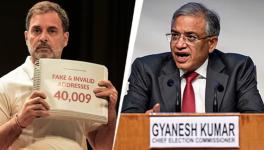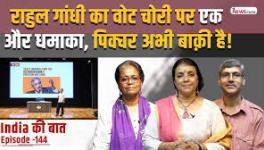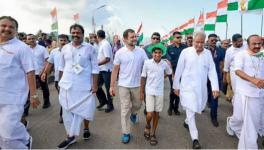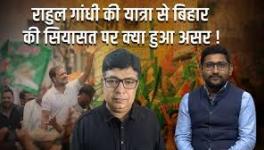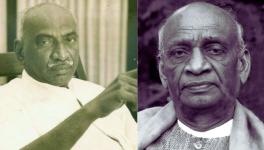Why Congress Needs to Settle its Leadership Question
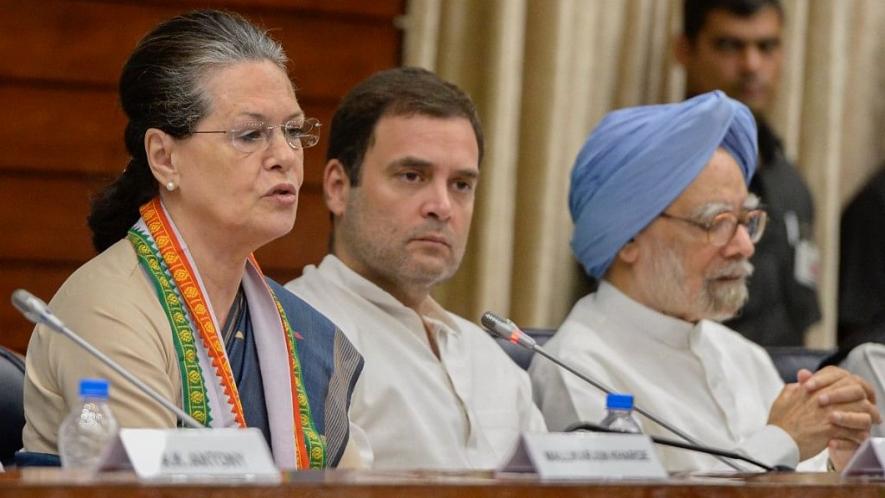
Representational Image. Image Courtesy: The Quint
The row that has erupted in the Congress party has been brewing for some time. Interim party president Sonia Gandhi’s decision to quit has precipitated matters. A Congress Working Committee (CWC) meeting is scheduled to take place on Monday. It is likely that it will take some time to sort matters out.
Some Congress leaders will probably view this as a disaster, but it is possible to see it more as an opportunity. Sonia’s resignation may or may not have been triggered by the letter to her seeking an arrest of the drift in the party, which was signed by both party seniors and juniors, i.e. across the supposed generational line of divide, but to characterise it as a “betrayal”, as Tamil Nadu MP and Rahul Gandhi loyalist Manickam Tagore did, is to miss the point.
To perceive the letter, moreover, as a conspiracy against Rahul, as many have, is also puerile, if for no other reason, because many of the signatories are Gandhi family loyalists and canny enough politicians to know that Rahul will be elevated to the president’s post whenever he wants to claim it. Thus, the controversy represents a chance to grasp the nettle and resolve the leadership issue forthwith, not necessarily in undue haste, and initiate a rebuilding of the organisation bottom upward.
Of some significance is the demand voiced in the letter for the revival of the Parliamentary Board, of yore a key decision-making body second only to the CWC, and elections for the latter. The constitution of the Indian National Congress, which some might be surprised to learn exists, provides for a working committee consisting of the Congress president, the leader of the party in Parliament (both positions now held by Sonia) and 23 other members, of whom 12 are to be elected (Article XIX).
The larger political situation must be outlined for the context to be clear. In political terms, the Congress’s siege in Rajasthan ended on 14 August when the Ashok Gehlot government won a trust vote, a conclusion augured by rebel Sachin Pilot’s capitulation in the face of the chief minister’s coolly played hard-ball, after he had smoked the peace pipe with the Gandhi siblings.
The Congress response to the crisis engineered by the Bharatiya Janata Party (BJP) was a stinging slap on the face of the two arch-manipulators who run the ruling party (no points for getting two guessed right out of two), the reverberations of which are still moving the air. It is to be hoped that the outcome in Rajasthan will slow down the politics of predation.
Having won this round, the Congress needs to build on the momentum. To meet the considerable challenges it faces, the least it can do is elect a full-time president. When Rahul Gandhi quit the post of party president after last year’s Lok Sabha election, it took the Congress two and a half months to accept the fact that he would not retract his resignation. It finally convinced Sonia to become interim chief.
Sonia’s term ended about a fortnight ago. She continued out of a sense of duty, but the state of her health clearly does not allow her to do justice to the onerous responsibilities entailed by the job. It is in this vacuum that the Congress had been pitched into fresh controversies.
When Rahul quit his post, he had said no member of his family would succeed him. At that time, Priyanka Gandhi Vadra had backed her elder sibling. On 19 August, several newspapers ran reports about a Priyanka interview in which she had said a non-Gandhi should head the Congress.
Congress spokesperson Randeep Singh Surjewala issued a statement the next day pointing out, quite correctly, that the interview, published in a recent book, was actually over a year old. Most of the reports had failed to provide context. Surjewala virtually accused the media outlets that had run the reports of acting in BJP-inspired bad faith. That may well be true, knowing the infinite capacity of the BJP to manipulate institutions, including the media, whether by infiltration, intimidation or blandishment, and the demonstrated cravenness of large sections of the Fourth Estate.
Surjewala’s point, whether right or not, fails, however, to address a number of issues. First, though Rahul and Priyanka accepted Sonia’s decision to become party president, a fait accompli, neither of them has yet resiled from this stated, and one supposes considered, opinion.
Second, the principal opposition party in the country can hardly keep functioning with a nominated, interim chief who is unable to devote as much time and energy as the job demands. A year has already passed. Is it the party’s case that there is no need to elect a leader who will have his/her own team, CWC downward? The pandemic is a problem. But if the Democratic Party in the United States can settle its nominations amidst a pandemic, which has hit the country far harder, what prevents the Congress from “virtually” electing a president.
Article XVIII of the Congress constitution governs the procedure for the election of the party president. It says that in the event of an emergency—the death or resignation of the incumbent president—the senior-most general secretary shall officiate as president until the CWC appoints a “provisional” president pending the election of a new head by the All India Congress Committee.
This is an enabling provision to meet “the event of an emergency”. It cannot be used to keep a provisional, or “interim”, president in place indefinitely. This essentially means that the Congress is playing a waiting game. They want to keep Sonia in place as until such time as Rahul signals that he is ready to return as party president. With the letter, this eventuality has been foreclosed.
The objections to prolonged stasis are innumerable. Let me outline the most salient ones. First, Rahul Gandhi has failed to demonstrate the most basic quality of leadership—the willingness to take real, rather than rhetorical, responsibility. After both the 2014 and 2019 electoral debacles, he cut and ran. He does not have the stomach for a scrap and is not willing to lead from the front.
This means, second, that Rahul is in effect exercising power without taking responsibility, through a small caucus, the epistolary dissentients suggest. As Surjewala has said himself, it is Rahul who is leading the charge against the BJP. If that is the case, he should be in a position which makes him accountable. The Bihar elections are around the corner, for instance. Who will plan the campaign? Who will take the responsibility for the outcome? Sonia? That would be a travesty, because of reasons mentioned above.
This leads us to the third point. It is clear that the Congress does not have any desire to look beyond a Gandhi to fill its top post. If that is the case, it should elect Rahul following the procedure laid out in its constitution. It is not as if someone will contest, if Rahul is in the fray. Being the elected leader will give Rahul a broader legitimacy and allow him to pick his team. And, if he is of a mind to do so, he can initiate work on refurbishing the organisation. The party constitution delineates the organisational structure from the primary committees up to the president in excruciating detail.
Finally, the question of legitimacy might seem redundant, given the apparently overwhelming desire of Congress members to see Rahul at the rudder, but it is not. Matters are unfortunately not so uncomplicated. Before the letter, the divisions within the party had been laid abundantly bare at the end of last month. At a meeting of the party’s Rajya Sabha members, some “younger” members, mainly Rajya Sabha MPs Rajeev Satav and KC Venugopal, who is also the party general secretary in charge of organisation, had launched a full-on attack on the record of the United Progressive Alliance-II government and blamed it for the Congress’ 2014 electoral defeat. This was perceived by senior leaders to be incendiary, uncalled-for and threatened to create a serious rift. Satav issued a clarification a few days later, damping down the controversy, but not before senior leader and former Madhya Pradesh chief minister Digvijay Singh weighed in with explicit criticism of the new generation.
The point is that the younger leaders are seen to be Rahul’s followers, whilst the senior generation could claim to have climbed the greasy pole by the dint of years of work and are generally speaking patronised by Sonia. In this situation, a complete lack of clarity at the top does not help the party. When the Bihar election campaign begins, the disarray will doubtless be more telling.
The Congress urgently needs all hands to be at the pump. This will not happen until the leadership question is settled through proper procedure. The letter to Sonia and her decision to quit should help cut through the clutter.
The author is a freelance journalist and researcher. His book, The Paradox of Populism: The Indira Gandhi Years, 1966-1977, was published in 2019 by Primus Books. The views are personal.
Get the latest reports & analysis with people's perspective on Protests, movements & deep analytical videos, discussions of the current affairs in your Telegram app. Subscribe to NewsClick's Telegram channel & get Real-Time updates on stories, as they get published on our website.












